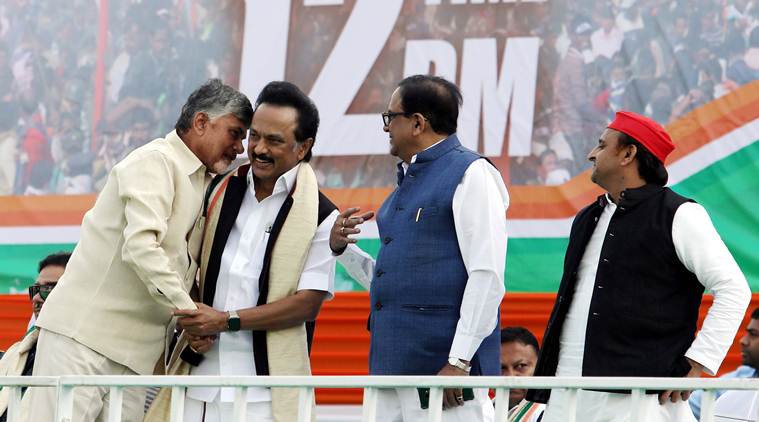
In 2014, after the Narendra Modi-led Bharatiya Janta Party came to power with a single party majority, most political analysts were of the opinion that regional parties would henceforth be relegated to the fringe with lesser influence in national politics. With a strengthened national party at the Centre, many also believed that the national narrative would be dominated by two of the major political parties — BJP and the Congress. However, in a short span of five years, the focus has now shifted back to the regional players.
These are the wheels of democracy — unpredictable: those who were invincible at one time stand weakened, those who were fringe have gained lost ground, those who were weak are now convincing. The beauty of holding elected representatives accountable and also keeping the national parties in check so as to maintain the federal structure as enshrined in the nation’s constitution.
As three scenarios emerge post the sixth round of voting — BJP leaders accepting that it would be the NDA alliance and not the BJP that will reach the magical 272+ number to form the government, the Congress-led UPA claiming the same on the basis of their regional alliance and some satta bazaar reports betting on the third front bagging most seats — what is common is that the regional parties are at the fulcrum of it all.
In the post-Independence period, the first non-Congress coalition government came to power in 1977 at the Centre, but it met with failure. It was only in the late 1980s that the clout of the regional parties increased as these parties grew at the expense of the gradual decline of Congress’ hold in various states, inadequate representation for regional interests and with every fractured mandate at the Centre they rose steadily and prominently. Today, 13 of the big states in the country have the presence of a strong regional player, much to the discomfort of national parties who believed their dominance in India’s politics would continue unchallenged.
After 1984, it was to be after three decades, that India once again witnessed a political party get a simple majority to govern the country. However, the subsequent bye-elections in the ensuing five years brought the regional parties back into prominence. Another interesting insight from the 2014 ECI election data tells us that the winning and losing seats were shifted between Congress and the BJP while the regional parties continued to hold on to their respective vote share. The vote share of regional parties hasn’t seen a significant rise, but has been steady at 40 per cent since 1998. However, most of the major regional parties increased their vote share in their states in 2014 as compared to 2009.
So, yet again in 2019, as India’s seven-phase general election concludes, it is becoming apparent that post results, it would be the regional players who would be an important factor in forming the government at the Centre. Over the years several of these state parties have been rightly or wrongly accused of being roadblocks to the idea of nation-building, they have risen at the cost of India’s development. The regional parties have also been attacked for making governments fall by withdrawing support on a whim, delaying decisions by threatening to withdraw support, many times of arm twisting to drop important policies or put them in cold storage, for e.g. the Women’s Reservation Bill. The reality though is that multi-party coalitions with all its inherent challenges and pressures are here to stay. How best the governance outcomes are streamlined will be the true test of leadership and coalition dharma.
What should not be forgotten is that these parties, on the back of people’s support, are now an important part of democratic process that ensures that India’s federal structure is not weakened by disproportionate power in the hands of the few. With better state representation, that gives voice to diverse sections of the society and involves them in the process will make governance truly participative. In many instances over the past years it has been the active intervention and participation of these parties that have managed to maintain the balance of power between the Centre and the state for e.g GST and farmer distress.
While the equations of power change every election cycle also with national parties constantly in election mode it is the regional parties that focus on the aspirations and expectations of the state. It is also interesting to observe how the regional parties (barring a few) have changed their narrative over the years, instead of confrontation with the Central government as an approach they have rapidly moved towards cooperation with New Delhi to ensure better governance. On the other hand, most of these regional parties that aspired to increase their footprint beyond their stronghold have not met with much success and have been ineffective in emerging as challengers to the well-entrenched national parties. However, in an ever-evolving democracy those dynamics could change too with voters looking for political parties that are in sync with their aspirations. With India’s governance becoming more decentralised, the state level parties and national parties will have to coexist also perhaps complement each other so as to strengthen the State-Centre relationship.
As the election winds up and before the results are declared, one outcome that is more or less certain is that the regional parties cannot be wished away and what also cannot be wished away is their place in the national political landscape.
Priyanka Chaturvedi is Deputy Leader- Shiv Sena